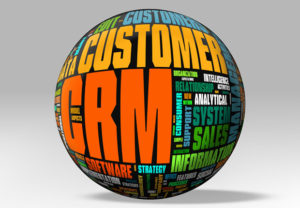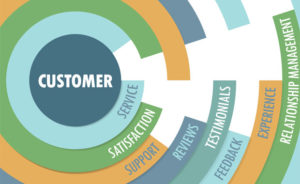A depressing number of people think that the be-all and end-all of CRM is the CRM application. While CRM software is a vital tool, CRM itself is really a discipline: It’s the cultivation of the customer relationship and the management of customer data to create better experiences for the customer and to generate better results for the business.
The CRM application doesn’t exist on its own in many organizations — or in many vendors’ suites of products, for that matter. The customer record is impacted by data from other applications — the voice of the customer, marketing automation, customer service, social media monitoring, and many others. That provides an unprecedented level of digital awareness of the state of the relationship between buyers and sellers.
There remains an enormous blind spot, however, and it’s in one of the most basic ways customers interact with the companies they buy from. It’s also a way that customers contact companies at moments of truth in the customer relationship, moments that either can result in a more loyal customer or can kill the relationship on the spot.
Tech Designed to Repel
Voice — y’know, over the telephone — is still a key component of the customer experience, despite the emergence of technology that some thought would render it obsolete. In an OpinionLab poll, 79 percent of customers wanted direct human contact to remain part of customer service. Two-thirds felt they received better customer service when they spoke to a person on the phone or in-store.
The trend toward customer self-service has been heartening to those focused on driving down costs — but that’s a mistaken focus. Self-service on the website, bots, and other tools for call diversion are helpful in answering simple calls. As a result, the calls that make it through to agents are more complex and more unusual, and they often demand specialized knowledge. Callers today are calling because they really need help, and they often need specialized knowledge.
Imagine yourself in such a circumstance. If you call the typical business with a complex question, your first task will be to navigate the interactive voice response (IVR) system. Hopefully, the menus and selections align with your needs and your knowledge of the company. Otherwise, IVR can turn into a frustrating maze. Should you become lost and finally bail out to go directly to an agent, you’re already disgruntled.
Then, you’re transferred to a random agent. There may be agents on duty at the time who know precisely how to answer your questions — but many companies have no way to get you to those agents easily. You may be stuck with an agent guessing along with you, looking up answers in a knowledge base. Or, you might be put on hold while you wait for a knowledgeable agent to finish up another call. Either way, your time is being devoured by the contact center’s processes.
To sum up: In a moment of truth that can make or break your long-term relationship with a business, you first have to battle through technology designed to make you go away. Then, you’re connected to an agent who may or may not be able to help you. You also may find yourself on hold, and you may find yourself repeating your own data several times.
CX vs. Cutting Costs
CRM is a discipline. It relies on efforts from people in sales, marketing, IT, and other parts of your organization. These efforts drive sales and create and keep customers. However, the contact center is still considered a separate organization in all too many companies, and the scenario described above can unravel all your CRM efforts, waste all your CRM investment, and drive your customers into the arms of your competitors.
The time has come to knock down the wall between the contact center and CRM. The data generated in phone calls must become part of the customer record, and that means CRM integration. If we can integrate marketing automation data — information about people before they become customers — we sure as heck ought to be able to integrate contact center data about people after they become customers.
It’s also time to stop looking at contact center technology as a tool for cutting costs and instead look at it as a tool for boosting customer experience. IVR is OK if it’s understandable and brief and if it helps route calls to the right people, but that means it has to be designed from the caller’s point of view and not the business’s point of view.
Forget the idea of the contact center agent as an expendable cog in a constantly churning machine. As we filter out the easy calls, we’re creating the need for expert agents. They must have more expansive knowledge and stronger customer skills than ever before. They must be laser-focused on customer experience, not just on getting people off the phone. Metrics will need to change — but first, attitudes about the value of agents need to change.
If your business has expert agents, you need to figure out how to connect customers to them. Contact center software that’s integrated with CRM can associate callers’ numbers with their customer records and automatically route calls to agents based on how their skills align with what’s in the customer record.
When the contact center is oriented in this way, instead of being hurled into an endless IVR maze, the first voice the caller hears is that of an agent who sees the customer’s history and is already equipped to help.
In 2018, according to Gartner’s numbers, worldwide investment amounted to US$45.8 billion. At the same time, Accenture reported that in 2018, $6.2 trillion in business was switched from one vendor to another because of customer dissatisfaction.
If dissatisfied customers were their own country, they would have the world’s third-largest economy, just behind China and ahead of Japan. Terrible contact center experiences aren’t the sole cause of that, but they indicate how aspects of the business not traditionally seen as “CRM” cause the discipline of CRM to go awry.
If your focus on CRM is limited to what goes into and out of your CRM application, you need to zoom out and take a look at the bigger picture. Revamping things that directly affect your customer relationships — like the experiences they have with your contact center — is a smart place to start.
























































